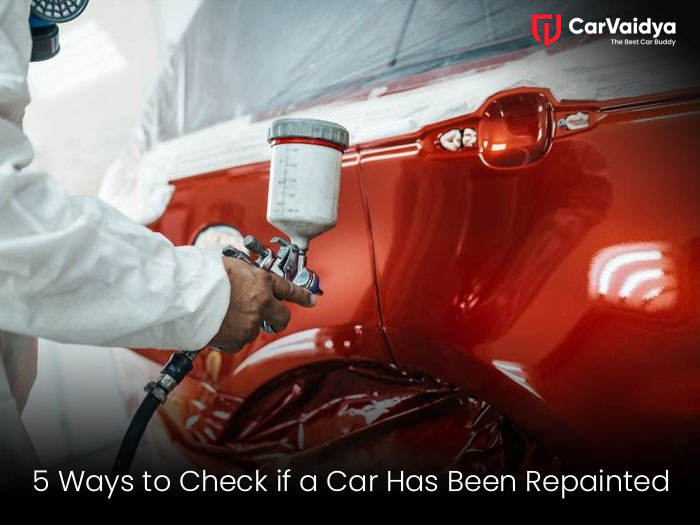Buying a car, whether new or used, requires a lot of scrutiny to ensure you’re gaining a good deal. One key aspect of surveying is whether the car has been repainted, as this can indicate previous damage, accidents, or other issues. Here are five ways to tell if a car has been repainted, helping you make a more informed decision.
1. Inconsistent Paint Texture and Color
One of the most perceptible signs of a repaint is a difference in paint texture and color. Factory paint jobs are normally smooth and uniform, with no variation in color or texture across the car’s surface. When examining a car, look closely at the paint in different lighting conditions.
Steps to Check for Inconsistencies:
Visual Inspection
Stand at various angles to the car and observe the paint’s reflection. Any dull spots, differences in gloss, or uneven texture might indicate a repaint.
Color Matching
Check for color mismatches, especially in areas like the door panels, hood, and fenders. Even slight differences can reveal a non-factory paint job.
Tools to Use
Paint Thickness Gauge
This tool measures the thickness of the paint and can highlight areas where the paint is thicker, suggesting additional layers from a repaint.
Flashlight
Shine a flashlight at different angles on the car’s surface to spot inconsistencies in texture and color.

2. Overspray and Paint Lines
Overspray occurs when paint goes beyond the intended area, which is common in non-professional paint jobs. This can often be seen on areas like the rubber seals, wheel wells, and other places where paint should not be.
Identifying Overspray
Rubber Seals and Trim
Check the edges of the windows, door seals, and headlights for any paint that looks out of place. Factory paint jobs typically have clean lines and no paint on these areas.
Wheel Wells and Underside
Look under the car, inside the wheel wells, and along the edges of panels. Overspray in these areas is a clear sign of a repaint.
3. Mismatched Panels
If a car has been in an accident and only certain panels were repainted, those panels might not perfectly match the rest of the car. Even a professional paint job can struggle to match the exact shade and finish of the original factory paint.
Detection Methods
Close Inspection
Look closely at the joints between panels, such as where the door meets the fender or the trunk lid meets the rear quarter panels. Different shades or slight misalignments can indicate repainting.
Feel the Surface
Run your hand over the edges of the panels. Factory paint jobs are smooth to the touch, while repainted areas might feel slightly rougher due to sanding or blending of new paint.
4. Presence of Masking Tape Lines
During a repaint, areas that should not be painted are usually covered with masking tape. Sometimes, after the tape is removed, faint lines or ridges can be left behind.
Where to Look
Edges of Panels
Look along the edges of the hood, doors, and trunk lid for any tape lines. These lines might be subtle but are a giveaway of a repaint.
Trim and Emblems
Inspect around badges, emblems, and trim pieces for any signs of masking. Slight differences in paint texture around these areas can indicate taping during a repaint.
5. Inconsistent Paint Quality
Factory paint jobs are typically flawless, with no runs, drips, or debris trapped under the paint. A repaint, especially an amateur one, can result in imperfections.
Spotting Imperfections
Paint Runs and Drips
Look for areas where the paint may have run or dripped. These are generally found on vertical areas like doors and fenders.
Dust or Debris
Check for any small particles or dust trapped under the paint, which would indicate that the painting environment was not as composed as a factory setting.
Identifying whether a car has been repainted can save you from probable headaches down the road. It’s necessary to combine these methods for an exhaustive, analysis. conflicting, paint texture and color, overspray, mismatched panels, masking tape lines, and inconsistent paint quality are all signs to watch for. Utilizing tools like a paint thickness gauge and conducting a detailed visual and tactile examination can provide further confirmation. By being diligent and attentive, you can make a more informed decision when purchasing a vehicle, assure, that you avoid hidden issues related to repainting.
Repainted cars aren’t naturally a deal-breaker, but knowing the reason behind the repaint and the quality of the job can help you determine the true value of the car and make a more informed buying decision.
You can read some other articles
How to choose the right car service center key factors to consider
How CarVaidya made car inspection process easy
Rising temperatures increase car fire risks


0 Comments